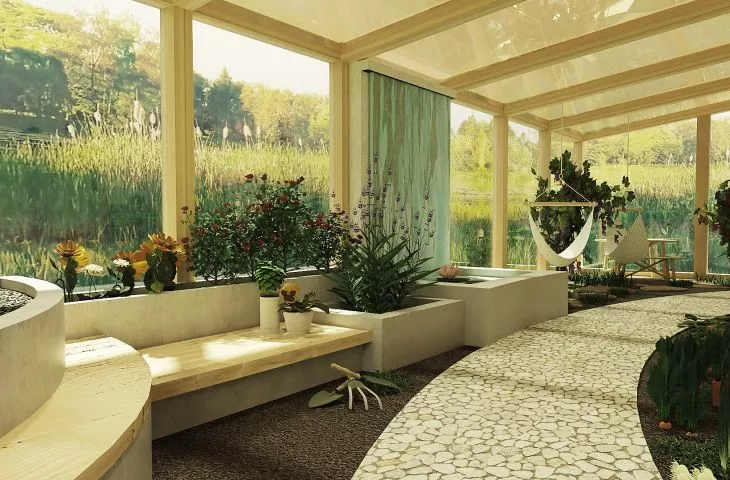Every person is different and identifies with a certain social group. Steen Eiler Rasmussen in his book "Feeling Architecture" writes: "People gathering for some purpose try to resemble each other. If one of them comes to the conclusion that he is too conspicuous, he will probably feel unhappy and will not be able to take pleasure in the whole event."
Communication is essential in proper functioning. Dialogue allows us to understand the other, how he feels, his needs. The problem arises when we do not find a way to communicate with the other person, when some factors do not allow us to do so.
The whole thesis (theoretical and design part) focuses on the role that polysensory plays in the interior, what effect it has on a person with various dysfunctions, also what factors affect the atmosphere of such a place and how it becomes an avenue for mutual understanding. The project is an attempt to create a space for experiencing "differently", one that allows in understanding the world, discovering it, "dosing" it in the right amounts for people who cannot cope with it in natural conditions. The work is inspired by the Snoezelen method, initiated in the Netherlands. The goal was to design something new, based on what already exists. The priority was to design a conventional space, low-cost, easily accessible. The work is intended to be an attempt to improve the contemporary reality of designing spaces of this type.
1. polysensory - relaxation and activation
what is polysensoryka?
Polysensoryis otherwise known as multisensory. Closely related to this concept is polysensory stimulation, that is, experiencing the world through the senses, by providing stimuli, easier to perceive. The main goal is to reduce two communication obstacles - aggression and withdrawal. Multisensory is also a space for the accumulation of multiple senses. We don't usually think about how they function.
Snoezelen method
The method was developed in 1974 in the Netherlands as a response to the needs of people with profound intellectual disabilities and multiple disabilities.1 The creators were staff at a center for mentally disabled children in Haaren. They were the first to attempt to arrange a room - the prototype of the Snoezelen Room, that is, one that focuses stimuli, affecting the various senses.
The word snoezelen was coined from a combination of two Dutch words: sniff and nap, defining the premise of the method, which focuses on both activation and relaxation. It is the person doing the therapy himself who decides the sequence and imposes his own pace. Repetition is important. The basic motto of the method is "I can do everything, I don't have to do anything," which perfectly reflects its nature and encourages use.
Snoezelen Room
vision: © Marta Slota
relaxation and activation
Relaxation is a state of mental and physical relaxation, involving the relaxation of muscles and reduced thinking activity.2 Activation, then, would be its opposite; it is a state of arousal for something, an increase in activity.3 The combination of these two states turns out to be an ideal method in the therapy of people with sensory integration disorders. The entire room interacts with each other, and the boundaries between zones blur. Everyone is left to choose the order of the stimuli provided. A stay in the Room should last about 45 minutes, with one therapist per person. These guidelines apply mainly to people with severe disorders.
dialogue in the context of space
Dialogue means conversation. It is an exchange of opinions, thoughts, views, arguments, taking place between people. Its purpose is to get to know each other, to communicate something to the other person and to create an interpersonal bond, a space for joint action.4 We distinguish between basic types: verbal and non-verbal. In the case of people with sensory disorders, the verbal way is often shaken, so nonverbal communication remains. Visual, i.e. facial expressions, gestures, body movement; acoustic - auditory stimuli; tactile, through direct contact; gustatory and olfactory; thermal; and vibratory, which is used by deafblind people.5 The aforementioned modalities refer to polysensory, that is, communicating through all the senses. A polysensory space can be a space of comfort, a space for joint action, experience, showing a person a slightly different world. Dialogue space, on the other hand, is something conventional, not physically existing, but somehow bonding sick people with healthy people. It's like an invisible space within a space.


















































